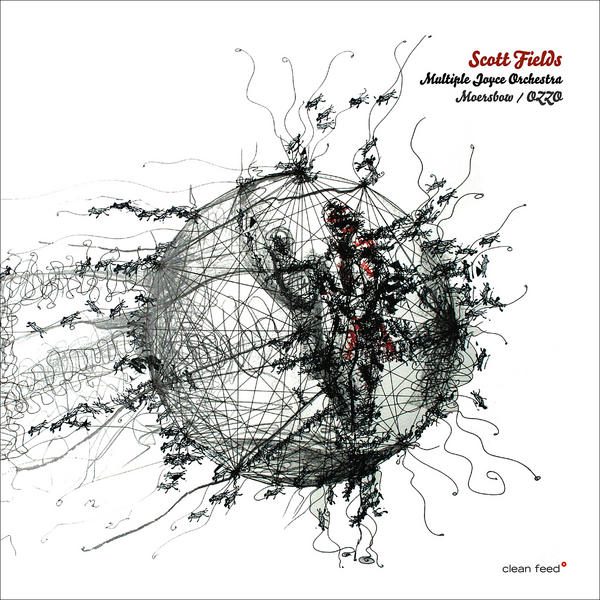
Scott Fields & Multiple Joyce Orchestra
Personnel:
Achim Tang (b), Angelica Sheridan (f), Annette Maye (cl), Axel Lindner (v), Carl Ludwig Hübsch (tba), Christian Thomé (perc), Christina Fuchs (ss), Eva Pöpplein (comp), Florian Standler (acc), Frank Gratkowski (as), Georg Wissel (as), Marion Wörle (aka Frau W) (comp), Matthias Mainz (t), Matthias Muche (tb), Matthias Schubert (ts), Melvyn Poore (tba), Michael Heupel (f), Norbert Roderkicher (f), Philip Zoubek (p), Radek Stawarz (v), Scott Fields (cond), Thomas Lehn (vib), Tom Lorenz (vib), Udo Moll (t), Vincent Royer (vla),
Also Available on iTunes
4,50 €
In stock
Fields wrote OZZO and Moersbow with the idea of having a book (which continues to grow) that could be performed by any ensemble stocked with at least sixteen traditionally trained musicians who play pitched instruments and who improvise. The piece can accommodate many more pitched or unpitched instruments as well.
The musicians in this orchestra reflect Cologne’s deep and wide musical pool. For decades the city has been a magnet for creative musicians of a particular ilk. Classical matter whetted, they are nonetheless zealous improvisers, boundary violators, genre ignorers, alliance formers, vagabonds. For decades they have been drawn to Cologne by Germany’s largest music conservatory, supportive venues such as the Loft, the presence of avant-garde pioneers such as Stockhausen, Kagel, Ligeti, and Koenig, and close proximity to other musical centers such as Amsterdam, Paris, and Berlin.
OZZO, which takes up most of the bytes on this disc, is the most recent of Fields’ modular compositions. The first was 48 Motives and the second was 96 Gestures. An improvising conductor, Fields on this recording, selects material and indicates when, and sometimes how, the musicians are to improvise. The language that the conductor and musicians use to communicate is a set of physical gestures drawn from the American Manual Alphabet (the letter shapes that many deaf people use to spell words with their hands) and traditional conducting movements.
In addition to playing their instruments, the musicians also can suggest, in the moment, modules they would like to play and with whom, whether they would like to improvise, solo, or even stop playing. This interaction makes the performances unusually organic and dynamic.
Moersbow is an homage to the Japanese electronics master Merzbow, who works the interactions of phased noise at extreme volume levels. In contrast to the music of its namesake, Moersbow is meant to be performed as quietly as possible. The ensemble is divided into groups that a conductor triggers to play a series of independent loops. The loops contain some combination of noises, pitch material, small melodies. Although Moersbow’s outcome is not as variable as Ozzo, the phasing and timing of the loops and choices the performers make do result inconsiderable differences between performances